Review by Wallace Wyss –
Author: Terry O’Neil
Publisher: Veloce
Binding: Hardbound
Pages: 256
Price: (Amazon) $21
Publication date: 2015
ISBN 10: 1845847873 ISBN 13: 9781845847876
It is rare for me to review the same book twice but I reviewed this a couple years ago for a site which is no longer existent and it’s a good thing I reviewed it again as I like the book more the second time around.
You might ask why are you reviewing a five year old book? Because if you are into Ferraris you no doubt see the name NART mentioned time after time but can find little information. This is the best attempt so far. The book is extremely important to ’50s and ’60s Ferrari enthusiasts because it is the success story of an immigrant who came from Italy before the war and made Ferrari’s reputation in America.
In fact you could say that Luigi Chinetti even laid the cornerstone for Ferrari’s quick acceptance as a marque worldwide by winning Le Mans in a Ferrari when it was still an unknown brand. Chinetti met Enzo Ferrari when Ferrari was running an Alfa team. Chinetti came to America before the war with a team that was going to run the Indy 500 and then the war started and since Italy was an Axis power he was dubbed an enemy alien. But he managed to show he had machining skills and went to work for a US defense plant instead.
After the war, he went to Italy, visited Enzo, and in ’49 ran a factory Ferrari at Le Mans, winning first overall. Then he went back to America as Ferrari’s first US importer. He eventually started the North American racing team (which existed from ’57 to ’83) and was importing race cars, sometimes new, some used, some rebuilt from wrecks and rebodied, from the factory to sell in his showroom alongside street cars.
This book, through knowledge gained by the author from many interviews of racers and former clients, shows how Chinetti wormed his way into the US racing establishment even though at the time many American racers were supposed to be amateurs not racing for prize money. Chinetti realized there were rich swells who would shell out $9,000 or so (maybe $85,000 today) to buy a factory car and either race it themselves, or hire a competent driver.
Chinetti, as this book reveals, was a master at playing one racing organization against another, which sometimes involved circumventing the rules, changing engines (and the author implies, even a serial number or two) to get cars entered. He had an uncanny ability to spot the big name people who, if they bought a Ferrari, would get good publicity, like Briggs Cunningham, an heir to the Swift meat packing fortune. Another sponsor who bought cars was a Rockefeller relative, a lady who indulged a racer named Jan de Vroom so long as he would tell her spicy stories of his gay life style (he was eventually murdered). Another buyer was a woman who was heir to the Reynolds tobacco fortune. She was so show-off with money that at one time she made a dog collar for her pooch that contained the Hope diamond!
Chinetti got Ferrari drivers in the news. Twice in the book he hired an all girl team of racers–tell me that didn’t get attention! And it’s not all about people, this author has a heartfelt story about some of the cars too. My favorite is the ’65 Le Mans where Jochen Rindt had threatened to leave the Chinetti-dealership-entered Ferrari 250LM effort in the lurch and walk out mid-race and even tried to damage the car but unaccountably the car took the abuse and soldiered on (the mark, I might add as someone who is associated with horse breeding, of a true thoroughbred), and damned if it didn’t win the race, beating the factory cars!
Another very revealing story is when Chinetti bought three cars to Le Mans and when the FIA wouldn’t let the Ferrari GT4 run (hadn’t been enough built yet to be a production car), he threatened to pull all his 3-car entry. It’s a sad picture of a hardball businessman who lost touch with his power because the FIA took his offer and replaced the cars in a second. It’s a behind the scenes picture of threat and counter threat.
Luigi Chinetti (pronounced with a hard “C” as in Kin-eddy”) was enabled from the ’60s by his handsome son, Luigi Jr. otherwise known as “Coco.” Coco was a good driver and such a good salesman he even married one of the showroom customers (the aforementioned tobacco heiress) Coco was also involved in designing his own style of Ferraris on the side, and this part, (except for the ten NART 275 GTB-based spyders) gets neglected in the book, such as no mention of the 275P race car that Coco rebodied in italy as a road car using a fashion ad illustrator to do the styling. That car was eventually rebodied to a stock Ferrari body though Ferrari sued him for making counterfeits (a fine how-do-ya-do for the family that made Ferrari’s name). In fact Coco gets few mentions in the book though he proved to be a master in his own field–envisioning the future collector car market–by saving old race cars for decades and then re-introducing them as valuable artifacts.
It’s a little sad that Luigi Sr. gradually lost all his distributorships in the U.S, and had never asked for a percentage of the factory stock, so he built Ferrari’s reputation in the US but didn’t ensure long range profits for his efforts.
The book is hardbound, has decent printing. Not all the pictures are good–some clipping off part of the car– and some are black and white when restorers (and artists like me) want color but in the author’s defense few magazines used color back then so photographers didn’t bother to shoot it. And even a badly cropped picture originally taken can still help in placement of decals, race numbers and and such that helps restorers, model car builders and artists, all looking to get the car historically correct.
Going back to the personalities. I wish with each major character he would explain who they were later, like Carroll Shelby, Roger Penske, Jim Hall, no he just mentions their name and goes on. This is a story not only of a successful car company but a world class marketer.
I can think of other companies that introduced sports cars that went nowhere (ATS? Vector? Serenissima?) that didn’t have a first class marketer to find the people with money and the drivers who could deliver a win.
So I give the book a B-plus. Historians will be glad there’s long lists in the back of serial numbers and races though he warns Chinetti would play fast and loose when it came to who owned which car, and which car was which. I hope in an expanded edition sometime in the future, the author will tell more about the remarkable people that, along with great cars, made Ferrari history.
In sum a good book for the money.
Let us know what you think in the Comments.
THE REVIEWER: Wallace Wyss has published several Ferrari books including the noirish action thriller Ferrari Hunters.
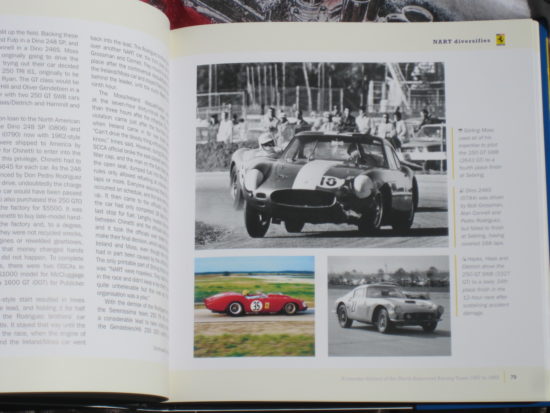
I hate to see a color picture on the same page as black and white, when you’re printing color, all the pictures on the same page with the color shot could have been in color but, back in the Sixties, race photographers didn’t use much color because the magazines were in black and white

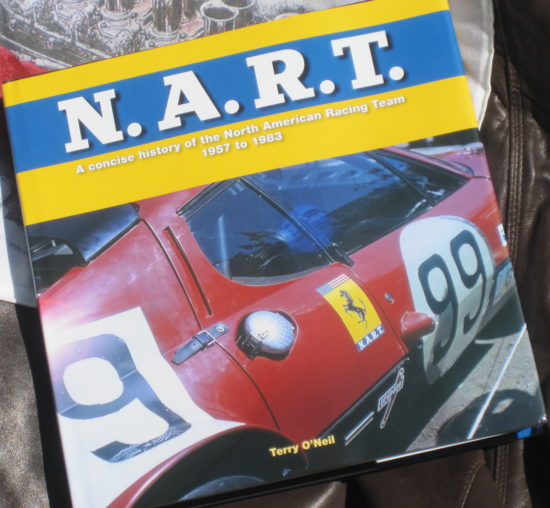
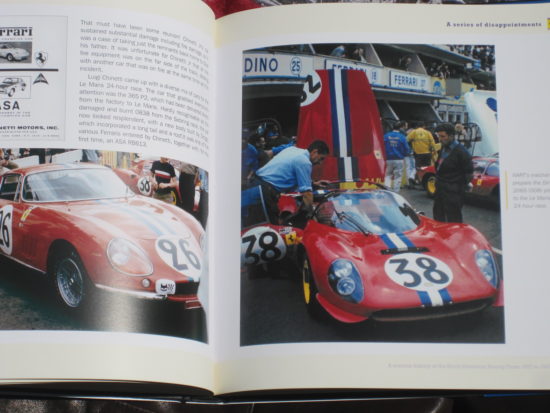
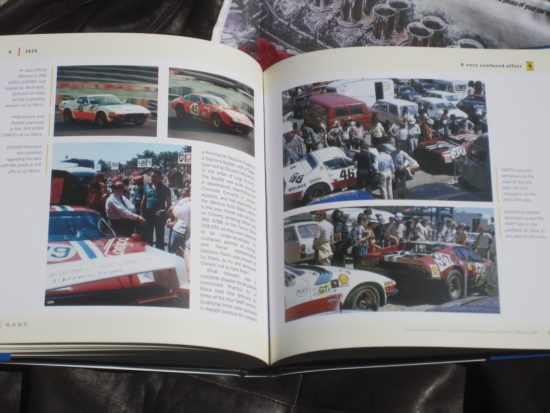
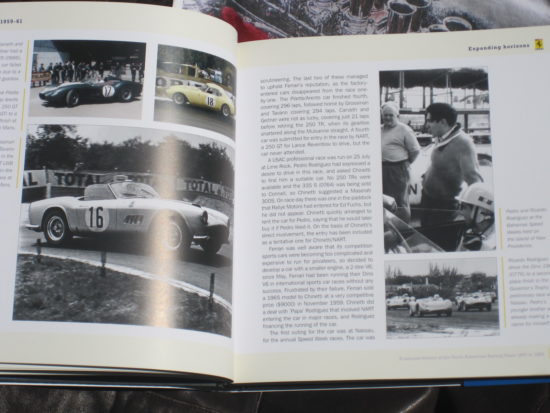
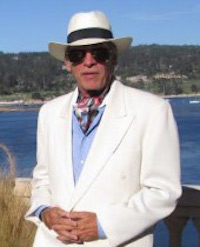
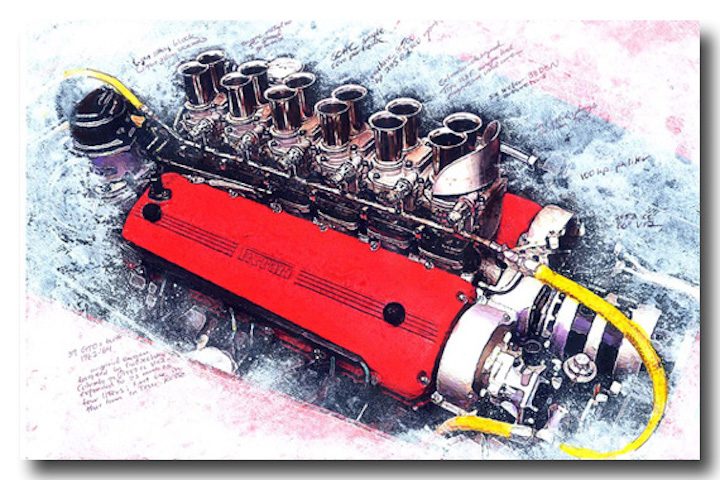

very clever and intresting analysis.Both ob cars, men and book printing. Very useful.